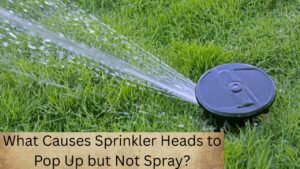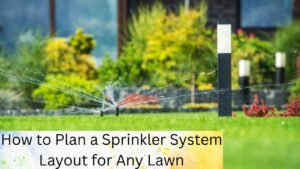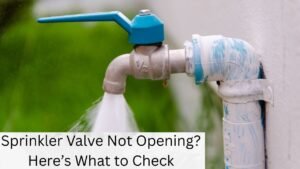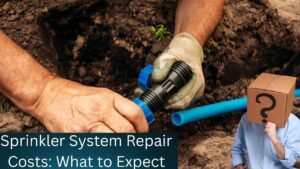Your sprinkler system relies on more than just pipes and valves—it also depends on a network of wiring that keeps everything running smoothly. When those wires fail, you end up with zones that won’t turn on, erratic schedules, or a completely dead system. Electrical issues are frustrating, but you can diagnose them without tearing up your yard or replacing expensive parts.
With decades of field experience under my belt, I’ll walk you through troubleshooting sprinkler wiring problems step by step. No fluff, just practical guidance you can use today.

Why Sprinkler Wiring Problems Happen
Sprinkler systems use low-voltage wiring to control valves and deliver signals from the controller. Common causes of wiring issues include:
- Corroded or loose wire connections
- Damaged wires from digging or rodents
- Faulty solenoids
- Power surges or lightning strikes
- Controller malfunctions
Each cause affects your system differently, but the result is always the same—your sprinklers aren’t working properly.
Signs You Have Electrical Issues in Your Sprinkler System
Before going into troubleshooting mode, it’s important to identify whether the problem is actually electrical. Look for these signs:
- One or more zones won’t turn on
- Zones stay stuck on after watering cycles
- Controller displays error codes (fault, no AC, open circuit)
- The entire system won’t start despite having water pressure
- Weak or intermittent sprinkler performance
If you’ve confirmed your water supply is fine and the valves aren’t physically damaged, you’re likely dealing with wiring or controller issues.
Basic Components of a Sprinkler Electrical System
Understanding the parts involved will make troubleshooting easier. A typical sprinkler system includes:
- Controller/timer: Sends electrical signals to valves using low-voltage power
- Transformer: Converts household voltage (120V) to low-voltage (24V AC)
- Zone wires: Dedicated wires connecting each valve to the controller
- Common wire: A shared return wire for all valves
- Solenoids: Small coils on valves that open/close when energized
Problems in any of these components can disrupt communication and prevent zones from functioning properly.
Tools You’ll Need for Troubleshooting
Before starting, gather the right tools:
- Multimeter (voltage and continuity settings)
- Wire strippers
- Waterproof wire connectors
- Screwdrivers
- Replacement solenoid (for testing)
- Controller manual
Optional but helpful tools: valve locators, wire tracers, and spare low-voltage wire for temporary bypass testing.
Step-by-Step Troubleshooting Guide
Let’s walk through how to identify wiring problems without tearing everything apart.
Step 1: Inspect the Controller
Start at the source: your sprinkler controller.
- Check if the display is active and shows the correct time.
- Look for error codes like “no AC,” “fault,” or “open circuit.”
- Ensure the system is getting power (check outlet or circuit breaker).
- Verify that schedules are properly set.
If the display is blank, the transformer may have failed or the unit has lost power. Replace the transformer if necessary.
Step 2: Check Voltage at the Controller
Use a multimeter to verify output at the controller’s terminals:
- Set your multimeter to measure AC voltage.
- Test between the common terminal (usually marked COM) and the zone that isn’t working.
- Activate the problem zone manually from the controller.
- Look for a reading between 24V to 28V AC.
No voltage? The controller port may be faulty. If other zones work, the issue is likely in the field wiring or solenoid.
Step 3: Inspect Visible Wiring and Connections
Locate your valve box and check:
- Wire connectors for corrosion or looseness.
- Signs of deterioration on insulation.
- Rodent damage or any exposed copper strands.
Replace old connectors with waterproof ones to prevent future corrosion.
If you find loose wires, reconnect them and test the system again.
Step 4: Test Solenoid Functionality
A faulty solenoid will prevent the valve from opening. Follow these steps:
- Disconnect the suspect solenoid from its wires.
- Set your multimeter to measure resistance (ohms).
- Place the meter leads on the two solenoid wires.
A typical solenoid should read between 20–60 ohms. A reading of 0 means a shorted solenoid, while OL or very high resistance indicates an open circuit.
Replace any faulty solenoid with a new one, reconnect the wires, and test the zone again.
Step 5: Perform a Continuity Test on the Field Wires
If the solenoid checks out, test the zone wire for continuity:
- Turn off the controller’s power.
- Disconnect the zone wire and common wire from the controller.
- Twist these two wires together at the valve box.
- Back at the controller, use the multimeter to test continuity between the zone and common terminals.
If there’s no continuity, the wire is damaged or cut somewhere between the controller and valve.
For a quick workaround:
- Run a new temporary wire or use a spare zone wire (if available) to confirm the valve functionality.
- If the valve operates with the new wire, you’ve confirmed field wire failure.
Common Wiring Issues and Solutions
| Problem | Cause | Solution |
|---|---|---|
| No voltage at controller | Faulty transformer or power loss | Replace transformer/reset breaker |
| Single zone not working | Damaged wire or bad solenoid | Replace wire/solenoid |
| All zones not working | No power or common wire break | Check power source/repair common wire |
| Error codes on display | Short circuit or open valve | Inspect wiring and connectors |
Preventing Future Sprinkler Wiring Problems
Wiring issues are often preventable with a little maintenance:
- Use waterproof connectors in valve boxes to prevent corrosion.
- Regularly inspect valve boxes for rodents, moisture buildup, or loose wiring.
- Avoid digging near known wire paths—consult your irrigation map if available.
- Install surge protection on the controller to guard against lightning damage.
Perform seasonal inspections to catch potential problems early and avoid costly system downtime.
When to Call a Professional
If you can’t locate the break or the issue persists after replacing solenoids and rewiring connections, it’s best to call an irrigation professional. They have specialized equipment (wire trackers, valve locators, and fault finders) to diagnose hidden issues quickly.
Repeated electrical failures may also indicate deeper wiring problems or the need for a new controller.
Final Thoughts
Troubleshooting sprinkler wiring problems doesn’t have to be intimidating. By following these steps, you can identify common electrical issues, repair faulty connections, and restore your irrigation system without guesswork.
Stay proactive with seasonal checks to avoid future failures and keep your lawn healthy.
Need help finding the right replacement solenoid or troubleshooting tools? Explore trusted irrigation brands like Rain Bird, Hunter, and Toro for reliable components that keep your system running smoothly.




